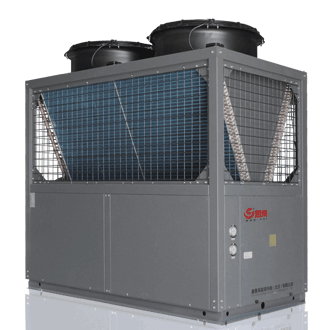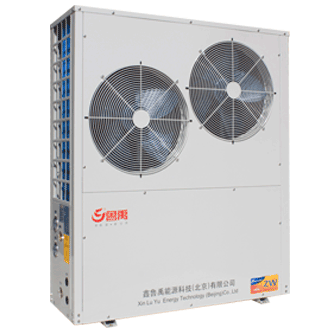推薦產品
歐洲的寒冷氣候空氣源熱泵(低溫空氣源熱泵)初識
Cold Climate Air Source Heat Pump(寒冷氣候空氣源熱泵)(ccASHP) / (低溫空氣源熱泵)

獨立住宅使用“空氣源熱泵系統(tǒng)”(配合其它形式的制熱系統(tǒng)混合使用)正在成為歐洲供暖系統(tǒng)的熱門選擇。
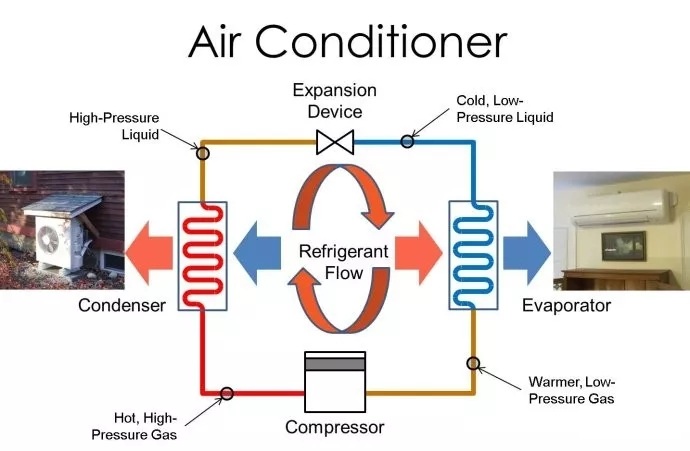
空氣源熱泵構成原理示意圖
Air Conditioner(空氣調節(jié)器 / 空調)
(左邊)Condenser(冷凝器)、(右邊)Evaporator(蒸發(fā)器)、
(下邊)Compressor(壓縮機)、(上邊)Expansion Device(膨脹裝置)
(圖中左邊)High-Pressure Liquid(高壓液體)、Hot, High-Pressure Gas(熱,高壓氣體)
(圖中右邊)Cold, Low-Pressure Liquid(冷,低壓液體)、Warmer, Low-Pressure Gas(溫暖,低壓氣體)
(圖中最左邊)空氣源熱泵系統(tǒng)的室外風機;(圖中最右邊)空氣源熱泵系統(tǒng)的室內風機。

歐洲一采暖設備廠商的實物樣品展廳內部一瞥\
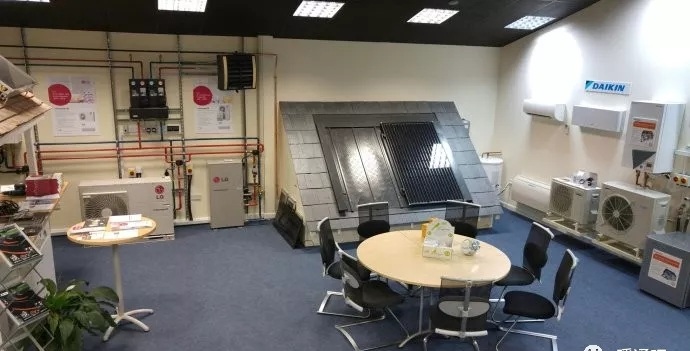
歐洲一采暖設備廠商的實物樣品展廳內部一瞥
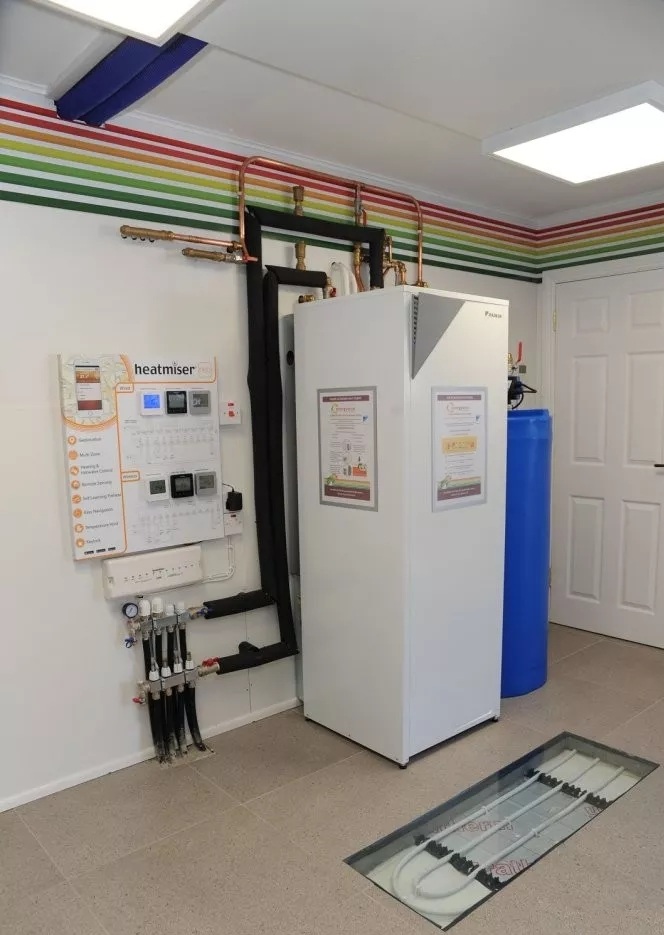
歐洲一采暖設備廠商的實物樣品展廳內部一瞥

歐美某地一輕型木結構獨立住宅的外面,可見安裝有“空氣源熱泵系統(tǒng)”的室外風機。
(跟過去常見的使用電力的空調系統(tǒng)的室外風機相似,但工作原理不一樣,節(jié)能減碳效果也不一樣)。

歐洲某地一輕型木結構獨立住宅的外面,可見安裝有“空氣源熱泵系統(tǒng)”的室外風機。

歐洲某地一輕型木結構獨立住宅的外面,可見安裝有“空氣源熱泵系統(tǒng)”的室外風機。
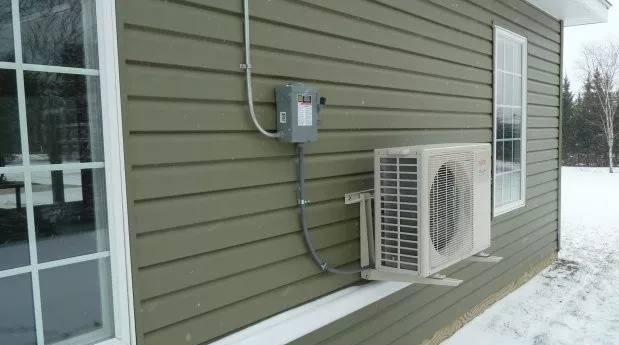
歐洲某地一輕型木結構獨立住宅的外面,可見安裝有“空氣源熱泵系統(tǒng)”的室外風機(跟過去常見的使用電力的空調系統(tǒng)的室外風機相似)。
Exploring Climate Solutions Renewable Thermal Technologies: Heat Pumps
(探索氣候解決方案可再生熱能技術:熱泵)
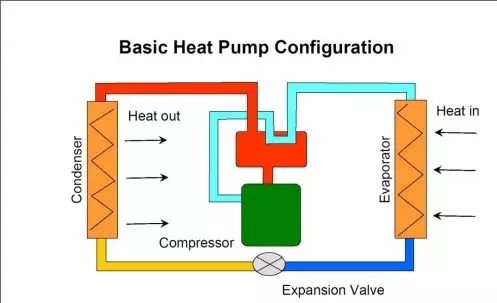
Basic Heat Pump Configuration(基本熱泵配置)
Condenser(冷凝器)、Evaporator(蒸發(fā)器)、Compressor(壓縮機)、Expansion Valve(膨脹閥)
Heat out(放熱)、Heat in(吸熱)
Types of Renewable Thermal Technologies(可再生熱能技術的類型:)
1、Heat Pumps(熱泵)
(1)、Air Source Heat Pumps (heating, cooling)(空氣源熱泵(加熱,冷卻))
(2)、Heat Pump Water Heaters (water)(熱泵熱水器(水))
(3)、Ground Source Heat Pumps (heating, cooling, water)(地源熱泵(加熱,冷卻,水))
2、Solar Thermal(太陽能熱)
3、Biomass(生物質能)
4、Biodiesel(生物柴油)
What is a heat pump and how does it work?(什么是熱泵,它是如何工作的?)
The technology is fundamentally no different than that used in a refrigerator.
(這項技術與冰箱使用的技術基本上沒有區(qū)別。)
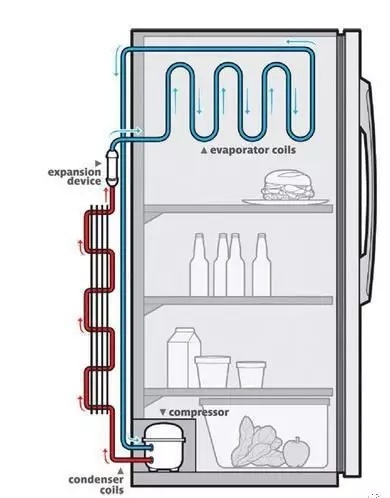
The primary advantage of heat pumps is that it is using electricity to move heat versus converting electricity directly to heat.
(熱泵的主要優(yōu)勢在于它利用電力來傳遞熱量,而不是直接將電力轉化為熱量。)
Thus they can be up to four + times more efficient than electric heat because they take advantage of “free” thermal (heat) energy.
(因此,它們可以比電熱效率高出四倍以上,因為它們利用了“自由”熱(熱)能。)
Heat pumps do not utilize combustion, so no chimney or venting is required.
(熱泵不使用燃燒,所以不需要煙囪或排出廢氣。)

One disadvantage of heat pumps is that their efficiency is a function of outdoor (or ground) temperature.
(熱泵的一個缺點是其效率是室外(或地面)溫度的函數。)
– Heating capacity and efficiency is lower with lower source temperature.
(——熱源溫度越低,熱效率越低。)
– Cooling capacity and efficiency is lower with higher source temperatures
(——源溫度越高,冷卻能力和冷卻效率越低。)
Ground Source Heat Pumps (aka “Geothermal Heat Pumps”)
(地源熱泵(又名“地熱熱泵”))(該部分的詳細內容介紹——略)
Air Source Heat Pumps(空氣源熱泵)
Use the outdoor air as the heat sink and heat source.(使用室外空氣作為散熱器和熱源。)

Expansion Valve(膨脹閥)、Outdoor Coils(室外換熱器)、Liquid evaporates into gas(液體蒸發(fā)成氣體)、Compressor(壓縮機)、Fan(風扇)、Gas condenses into a liquid(氣體凝結成液體)、Indoor Coils(室內換熱器)
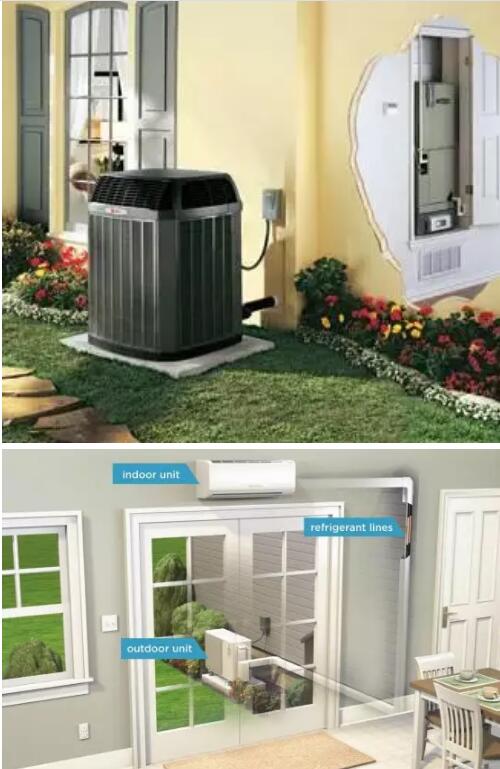
Indoor unit(室內單元部分)、outdoor unit(室外單元部分)、refrigerant lines(制冷劑管路)

– Ducted heat pumps(——導管式熱泵)
– Ductless heat pumps(——無導管熱泵)
– Heat Pump Water Heaters(熱泵熱水器)
Not as efficient as ground source heat pumps and work best in milder climates.
(不如地源熱泵效率高,在較溫和的氣候條件下效果最佳。)
– Heating performance (capacity and efficiency) drops as outdoor air temperature drops.
(——隨著室外空氣溫度下降,加熱性能(容量和效率)下降。)
– Cooling performance (capacity and efficiency) drops as outdoor temperature rises.
(隨著室外溫度升高,制冷性能(容量和效率)下降。)
New generation heat pumps are greatly improved: they will work and can provide value in very cold climates.
(新一代熱泵有了很大的改進:它們能工作,并能在非常寒冷的氣候條件下提供價值。)
New Generation “Cold Climate” Ductless Heat Pumps
(新一代“寒冷氣候”無通道熱泵)
Greatly improved performance.(性能大大提高。)
However, supplemental heating may be required for low outdoor temperatures.
(然而,對于室外低溫,可能需要補充加熱。)
However, most (sometimes all) of load can still be met.
(但是,大部分(有時是全部)負載仍然可以被滿足。)
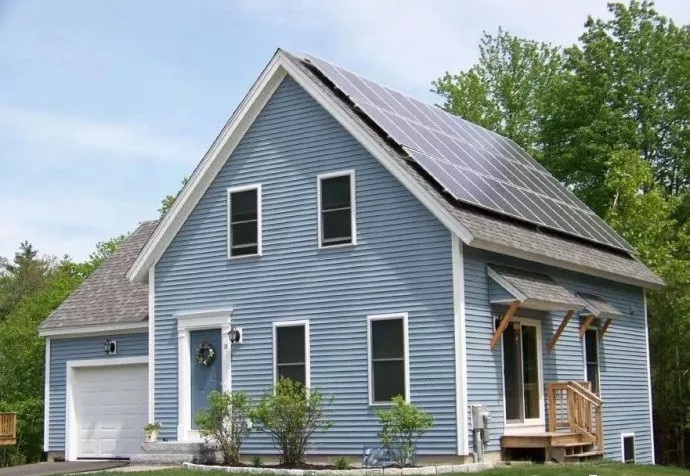
馬薩諸塞州零能源之家2個區(qū)域使用空氣源熱泵
Builder:Carter Scott,Transformations Inc.
Customers face a myriad of options!(用戶面臨著多種選擇!)
Cold Climate Heat Pumps Using Tandem Compressors
(采用串聯式壓縮機的寒冷氣候熱泵)
In cold climate zones, e.g. ASHRAE climate regions IV and V, conventional electric air-source heat pumps (ASHP) do not work well, due to high compressor discharge temperatures, large pressure ratios and inadequate heating capacities at low ambient temperatures.
(在寒冷地區(qū),例如,美國采暖、制冷與空調工程師學會ASHRAE(American Society of Heating, Refrigerating and Air-Conditioning Engineers)氣候區(qū)域IV和V,傳統(tǒng)的電動空氣源熱泵(ASHP)由于壓縮機排放溫度高,壓力比大,在低溫環(huán)境下制熱能力不足,效果不佳。)
Consequently, significant use of auxiliary strip heating is required to meet the building heating load.
(因此,需要使用輔助加熱裝置來滿足建筑物的供暖負荷。)
We introduce innovative ASHP technologies as part of continuing efforts to eliminate auxiliary strip heat use and maximize heating COP with acceptable cost-effectiveness and reliability.
(我們努力引入創(chuàng)新的具有可接受的成本效益和可靠性的空氣源熱泵技術作為其中的一部分,消除輔助熱利用,最大限度地提高供熱效率。)
These innovative ASHP were developed using tandem compressors, which are capable of augmenting heating capacity at low temperatures and maintain superior part-load operation efficiency at moderate temperatures.
(這些創(chuàng)新的空氣源熱泵采用串聯式壓縮機開發(fā),在較低的溫度下,可增加供熱能力,保持良好的部分負荷運行效率在溫和的溫度。)
Two options of tandem compressors were studied; the first employs two identical, single-speed compressors, and the second employs two identical, vapor-injection compressors.
(研究了串聯式壓縮機的兩種選擇:第一種采用兩種相同的單速壓縮機,第二種采用兩種相同的蒸汽噴射壓縮機。)
The investigations were based on system modeling and laboratory evaluation.
(調查以系統(tǒng)建模和實驗室評價為基礎。)
Both designs have successfully met the performance criteria.
(這兩種設計都成功地達到了性能標準。)
Laboratory evaluation showed that the tandem, single-speed compressor ASHP system is able to achieve heating COP = 4.2 at 47 F (8.3 C), COP = 2.9 at 17 F (-8.3 C), and 76% rated capacity and COP = 1.9 at -13 F (-25 C).
(實驗室評估顯示,串聯,單速壓縮機熱泵系統(tǒng)能夠在47 F實現供熱系數= 4.2(8.3℃),COP = 2.9 17 F(8.3 C),和76%的額定容量和COP = 1.9 - 13 F(25 C)。)
This yields a HSPF = 11.0 (per AHRI 210/240).
(這就產生了HSPF = 11(每AHRI 210 / 240)。)
Cold-climate air source heat pumps (ccASHPs) are a high-efficiency technology that is an ideal candidate for homes relying on delivered fuels or electricity for space heating.
(寒冷氣候空氣源熱泵(ccASHPs)是一種高效率的技術,是依靠交付燃料或電力進行供暖的家庭的理想選擇。)
These designs have improved the capacity and effectiveness of ASHPs for a greater portion of the cold-climate heating season, thus reducing electricity use and limiting the need for backup heating.
(這些設計提高了ASHP在寒冷氣候供暖季節(jié)的大部分時間的能力和有效性,從而減少了電力的使用,并限制了對后備供暖的需求。)
Space heating energy savings of 39% to 65% and cost savings of 14%-29% were found.
(發(fā)現空間加熱節(jié)能39%至65%,節(jié)約成本14%-29%。)
Air source heat pumps (ASHPs) use a compression cycle refrigeration system to transfer heat from one location to another, allowing the system to heat a home during the winter and cool it during the summer.
(空氣源熱泵(ASHP)使用壓縮循環(huán)制冷系統(tǒng)將熱量從一個地方傳輸到另一個地方,從而使系統(tǒng)在冬季為家庭供暖,并在夏季降溫。)
ASHP systems consist of an outdoor unit that contains a fan, outdoor coil, compressor, and expansion valve, and an indoor unit that contains an indoor coil and a fan.
(空氣源熱泵系統(tǒng)包括一個室外單元,包含一個風機,室外盤管,壓縮機和膨脹閥,以及一個包含室內盤管和風扇的室內機。
In heating mode the outdoor unit uses a fan to draw outside air across a heat exchanger and absorb heat from the outdoor air.
(在制熱模式下,室外機使用風扇將外界空氣吸入熱交換器,吸收室外空氣中的熱量。)
The compressor warms the refrigerant further by increasing the pressure of the refrigerant in the system.
(壓縮機通過增加制冷劑在系統(tǒng)中的壓力進一步加熱制冷劑。)
The warm refrigerant runs through the heat exchanger in the indoor unit, where cooler air from the house absorbs the heat from the refrigerant before the indoor fan delivers the heated air throughout the house.
(溫暖的制冷劑流經室內機的熱交換器,在室內風機將熱空氣傳送到整個房屋之前,室內較冷的空氣吸收制冷劑的熱量。)
In cooling mode, the system runs in the opposite direction removing heat from the indoor air and transferring it outside, like a traditional air conditioning system.
(在制冷模式下,系統(tǒng)運行方向相反,將室內空氣中的熱量傳遞到外部,就像傳統(tǒng)的空調系統(tǒng)一樣。)
ASHPs transfer heat from one location to another and do not generate heat directly.
(空氣源熱泵將熱量從一個地方轉移到另一個地方,不直接產生熱量。)
This heat transfer process makes ASHPs a highly efficient form of space heating and cooling, outputting more heat energy than the electrical energy required to run the system.
(這種傳熱過程使空氣源熱泵ASHP成為空間加熱和冷卻的高效形式,輸出比運行系統(tǒng)所需的電能更多的熱能。)
ASHP systems are widely used for space heating in climates with mild heating seasons, and with recent upgrades, can now meet the majority of a home’s heat load in colder climates.
(空氣源熱泵系統(tǒng)廣泛應用于氣候溫和的加熱季節(jié),隨著近期的升級,現在可以滿足大部分家庭在寒冷氣候下的熱負荷。)
These systems have the greatest potential for adoption in cold-climate regions where natural gas is not available for space heating.
(這些系統(tǒng)在天然氣無法供暖的寒冷氣候地區(qū)具有最大的應用潛力。)
ASHPs can offset the use of more expensive delivered fuels, and for homes with electric resistance heat, can result in a significant reduction in electrical use.
(空氣源熱泵可以抵消更昂貴的交付燃料的使用,并且對于具有電阻熱的家庭可以導致電力使用的顯著減少。)
Additionally, as more federal and state policies require electric generation to become less carbon intensive, ASHPs will increasingly benefit carbon emissions reduction.
(此外,隨著越來越多的聯邦和國家政策要求發(fā)電成為低碳密集型,空氣源熱泵ASHPs將更加有利于減少碳排放。)
ASHP technology has improved by the addition of an inverter driven compressor and updates to the refrigerant, making the systems better suited for cold-climate heating.
(空氣源熱泵技術已經由逆變器驅動的壓縮機的制冷劑添加和更新改進,使系統(tǒng)更適合寒冷氣候加熱。)
The inverter driven compressor allows the compressor speed to modulate and increase capacity during periods of colder outdoor air temperatures.
(逆變器驅動壓縮機允許壓縮機速度調節(jié)和增加在寒冷的室外空氣溫度期間的容量。)
Manufacturers claim that these new, cold-climate systems are able to transfer heat into homes at outdoor air temperatures at and below 0°F.
(制造商聲稱這些新的、寒冷的氣候系統(tǒng)能夠在室外空氣溫度低于華氏0度時將熱量傳遞到家中。)
The Northeast Energy Efficiency Partnerships (NEEP) has created a set of specifications to identify cold climate ASHP (cASH Plus).
(東北能源效率伙伴關系(NEEP)制定了一套確定冷氣候空氣源熱泵(cASH Plus)的規(guī)范。)
These specifications include: variable capacity compressor, coefficient of performance (COP) at 5°F ≥ 1.75 at maximum capacity, a heat system performance factor (HSPF) ≥ 10 for ducted systems and ductless single-zone systems, and a HSPF≥ 9 for ductless multi-zone systems (NEEP, 2014).
(這些規(guī)格包括:可變容量壓縮機,5°F時的性能系數(COP)≥1.75,最大容量時的熱性能系數(HSPF)≥10,管道系統(tǒng)和無管單區(qū)系統(tǒng)的熱性能系數(HSPF)≥10, 無管道多區(qū)域系統(tǒng)(NEEP,2014)。)
Figure 1 shows the heating capacity and COP values provided by Trane for the XV20i model of ccASHP which has a reported HSPF = 10 (NEEP, 2014).
(圖1顯示了由Trane提供的具有報道的HSPF = 10(NEEP,2014)的XVASHi型號的ccASHP的加熱容量和COP值。)、

Figure 1. Trane XV20i COP and Heat Capacity. Created from data provided by the manufacturer.
(圖1.特靈XV20i COP和熱容量。 根據制造商提供的數據創(chuàng)建。)
The high efficiency of ccASHPs can help reduce reliance on delivered fuels for space heating in cold winter states such as Minnesota.
(寒冷氣候空氣源熱泵(ccASHPs)的高效率可以幫助減少在寒冷的冬季州(如明尼蘇達州)對供暖燃料的依賴。)
During periods of very cold temperatures when ccASHPS do not have adequate capacity to meet heating load, a furnace or electric resistant heat can be used as backup.
(在非常寒冷的時候,當寒冷氣候空氣源熱泵(ccASHPs)沒有足夠的容量來滿足熱負荷時,可以使用爐子或電阻熱作為備用。)
As electric generation becomes less carbon intensive, the emissions associated with ASHP’s will decrease, while emissions from propane and heating oil will not.
(隨著發(fā)電量減少,碳排放量減少,而丙烷和取暖油排放量則減少。)
Annual emissions would be even less with a more efficient ccASHP.
(如果采用更高效的寒冷氣候空氣源熱泵(ccASHPs),年排放量將會更少。)


